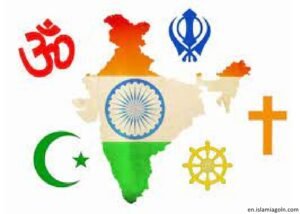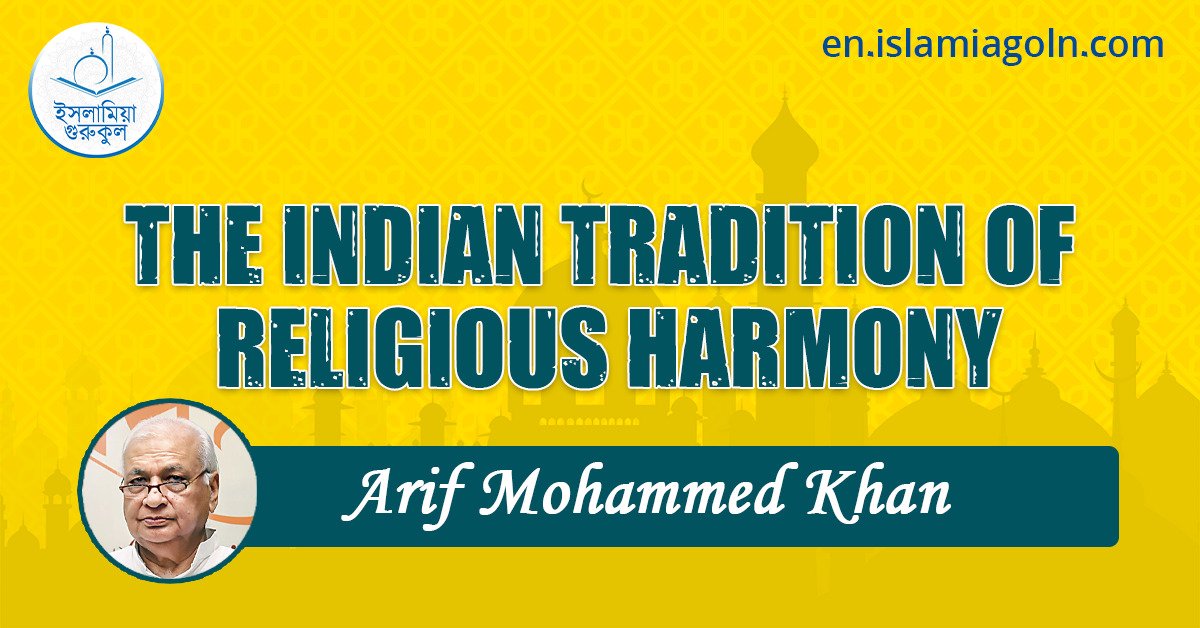Today is our Focus: THE INDIAN TRADITION OF RELIGIOUS HARMONY

THE INDIAN TRADITION OF RELIGIOUS HARMONY
An Arabic proverb asserts that ‘the Quran was revealed to the Bedouins (Arab), recited by the Misris (Egyptians) and embraced by the Hunood (Indians) The truth of the affirmation is borne out by the fact that India has produced an impressive number of scholars and saints who have contributed to the growth of Quranic sciences particularly to the liberal Sufi thought and tradition.
Commenting on Indian Islam, an orthodox Islamic journal Al-Furqan lamented in 1941 that:
The religion that is combination of Hinduised Islam, Sufism and monotheism has exercised great influence over the minds of the people since the last quarter of Tenth century. The belief in Sufism and concept of Wahdatul Wujood (Unity of Existence or Being) has become the dominant faith giving rise to Hindu pantheistic practices among Muslims.
The reference is to the period when the Bhakti Movement had started taking roots in India. This movement, initiated by Swami Ramanuja, was a conscious effort to bring harmony between Islam and Indian religious thought. The saints of the Bhakti Movement worked relentlessly for spiritual unity by highlighting common features of Vedanta and Sufi Islam. Since the principle of ‘Unity of Existence’ was common to both religious traditions, the Movement acquired great attraction and appeal for the masses.

The Bhakti movement produced eminent sages who became symbols of spiritual unity and defied all conventional tags of religious identity. The most venerable among them are Bhagat Kabir of Varanasi and Baba Guru Nanak Dev. The Bhakti saints were uncompromising believers in the unity of Godhead and spiritual potential of every human being. They vehemently rejected religious divisions and exclusive claims of superiority by various denominations.
Kabir enthusiastically used the medium of folk poetry to propagate the Bhakti ideals and greatly enriched Hindi literature with his moving sublime songs. The compositions of Kabir and other Bhakti saints highlighted the virtue of God consciousness and discounted all cleric theories that sought to create divisions on the basis of religious affiliation.
A Pakistani Scholar, Dr. Ishtiaq Husain Quraishi in his book The Muslim Community of the Subcontinent says:
Kabir propagated the Bhakti ideas because he believed not only in spiritual unity but considered it his life mission to build Hindu Muslim harmony on the basis of this spiritual unity. Kabir did not wish to harm any religious tradition but he believed that the real aim and purpose of religion was development and manifestation of spirit and not dry ritualism.

After Kabir, the Bhakti movement received a tremendous boost in the person of Guru Nanak Devji, who pursued the ideal of Religious unity by harmonizing the teachings of Vedanta and Islam. His beautiful compositions are powerful expressions of the principle of “unity of being” that acknowledges human dignity and equality. At one place he says:
Supreme Brahman pervades each soul and illuminates each being.
In another composition the great Guru says:
- If you can read four Vedas (Scriptures) and dip in holy waters during sacred days
- Spend prescribed charity and fast during the holy month
- If you are Qadi, Mulla or Yogi, wearing religious attire or doing household duties.
- But if you become not God-conscious, then all will come to naught.
Elsewhere he says that this God-consciousness manifests itself in internal purity and love and service to mankind. The compilation of his devotional compositions known as Guru Granth Saheb includes works of many Bhakti saints and Sufis.

Saints like Kabir and Guru Nanak have become a perennial source of inspiration for all those who believe in the spiritual unity of mankind and detest any discrimination on the basis of religion, race, caste or gender. The following lines of Sheikh Abdul Quddus Gangohi, a Sufi of the fifteenth century are a powerful echo of the same sentiment:
What is this unwholesome uproar that one is a believer and the other a disbeliever? One is obedient and the other a sinner, one is on right path and the other has gone astray; one is Muslim and pious and the other is a heretic and pantheist. The truth is that all submit to Supreme Lord like flowers of different colours integrate into one garland.
See more:
